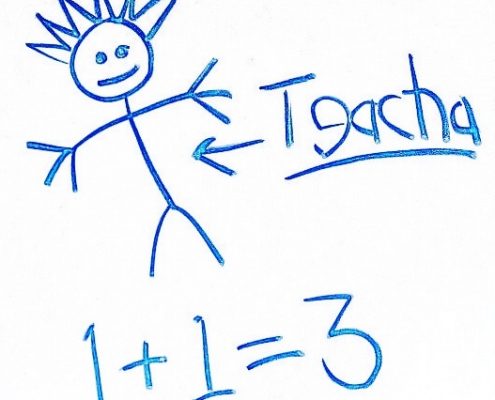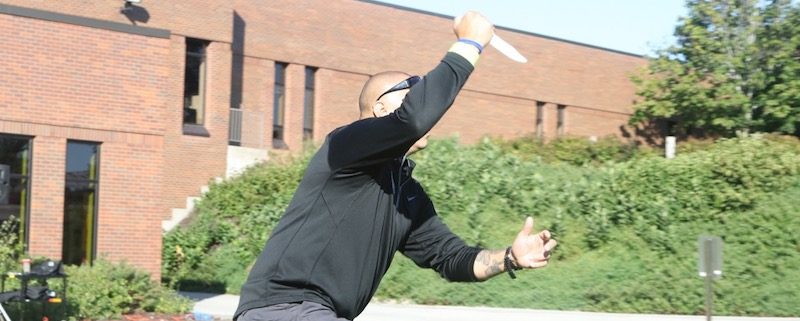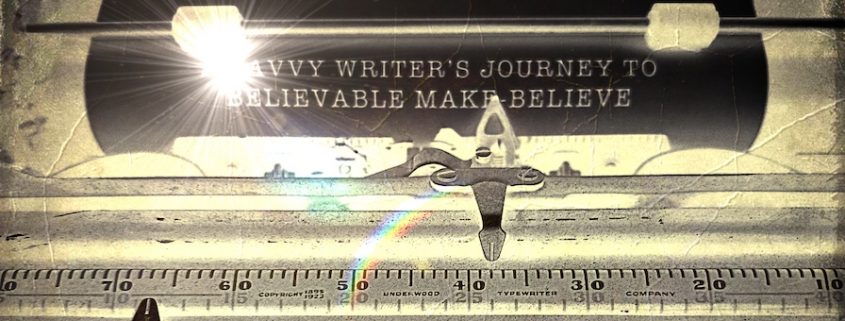My protagonist is former police detective turned college writing professor. (Hey, we have to have some stuff in common!) Because I share her disabling hearing loss but not her police experience, the Writer’s Police Academy is the perfect place to put myself in my character’s shoes.
I know TV is not the place to learn correct police procedure and even the best authors can make mistakes. Writers need to learn as much as they can so they write about police procedure correctly.
So what did I learn?
1. Police gear is heavy, bulky, and hot (and sometimes smelly).

Yup, it looks cool, but it’s bulky and heavy. Notice that that duty belt is mostly empty. It needs extra ammo, a night stick, extra handcuffs, extra pouches of miscellaneous stuff (like medical gloves and tourniquet), etc. These make the belt so bulky you can’t comfortably lean back in a chair or car seat – and female officers have to take the belt off to go to the bathroom. (Ask Tami Hoag about that.)
And it’s HOT. In the photo I’m comfortably dressed in shorts and t-shirt. In her patrol officer days, my protagonist would have worn long pants and a uniform shirt over that t-shirt and vest. Did I mention how hot that would be? The vest doesn’t breathe well so you sweat more. That means your t-shirt, vest, and even your uniform shirt become sweaty in no time.
Now imagine how hard it is to get in and out of a patrol car in all that gear, without snagging it on the seat belt, steering wheel, car door, etc. It impedes other movement too, like chasing bad guys and tying your shoes.
The equipment changes your stance, too. The first couple hours I wore a duty belt, I was busy trying to figure out what to do with my arms. I ended up putting my hands on my hips or resting them on the duty belt. Now I understand why some people find the cop stance threatening or intimidating.
2. But wait, there’s more!
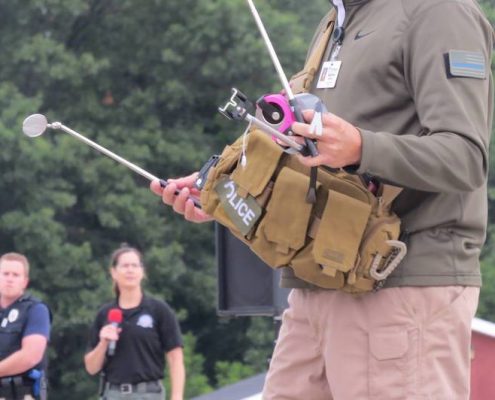
(Photo by Angi Morgan)
In some situations, officers carry a Break Out Bag (BOB) with extra gear. That way if they’re stuck in a stand-off they have extra ammo, snacks, water, first aid stuff, cargo straps for hauling injured office to safety, and any extra equipment they might need. In this photo Matt Ninham is showing just a few things from that BOB: a mirror on a stick, a selfie stick (for looking in attics, etc.), a pry bar, first aid gear, etc. The BOB is carried on the officer’s non-weapon side. Yup, even more added weight. My protagonist definitely does her push-ups and weight lifting.
3. There’s MUCH more to training than you might think.
Need to use your night stick to get a suspect to back up? Don’t aim for the head!
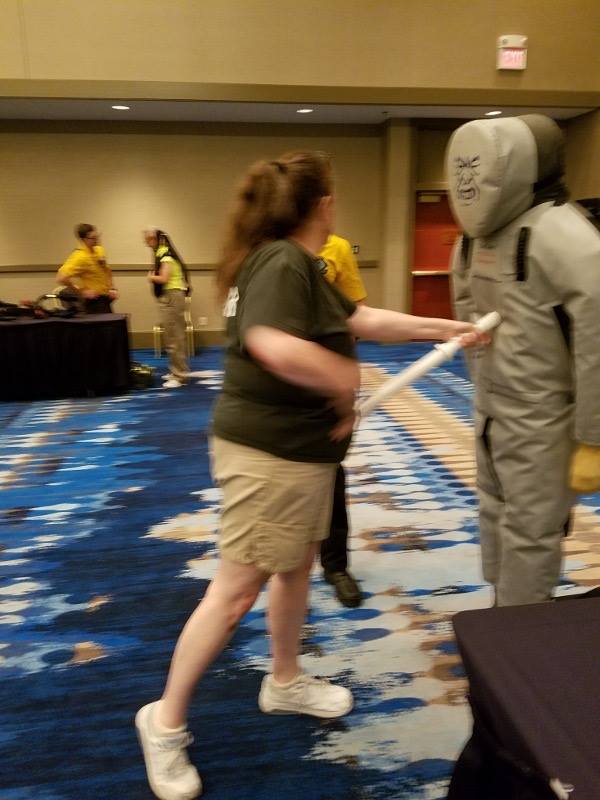
(Photo by Annette Dashofy)
When searching a building for an armed suspect, can you walk quietly and safely using a roll-step? Communicate silently with your fellow officers? Go though doorways without whacking your weapon, duty belt, etc., on the doorframe? It’s a good thing my protagonist knows this stuff!
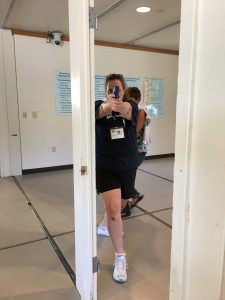
That doorframe probably has marks from my weapon and duty belt whacking it. The bad guys would definitely hear me coming.
Can you anticipate an attack?
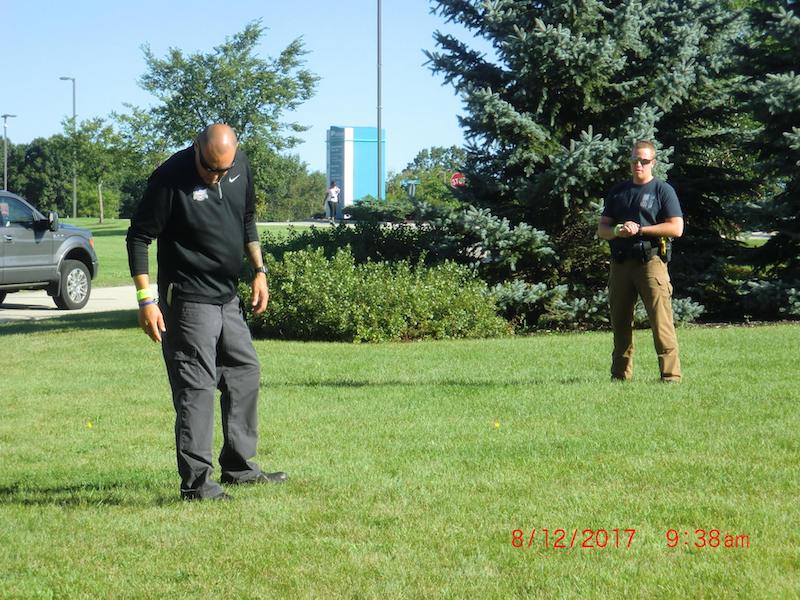
This was an example of how fast a suspect could draw a knife and kill an armed officer.

Writers Police Academy 2017 Knife Vs. Gun
It’s one thing to read about that on The Graveyard Shift; seeing it in action is an eye-opening experience.
This was also a good example of other skills my protagonist needs, like dealing with Emotionally Disturbed Persons (EDPs) and having a basic understanding of languages used by local populations (like Spanish in Green Bay). Hmm, what language does my protagonist need to learn?
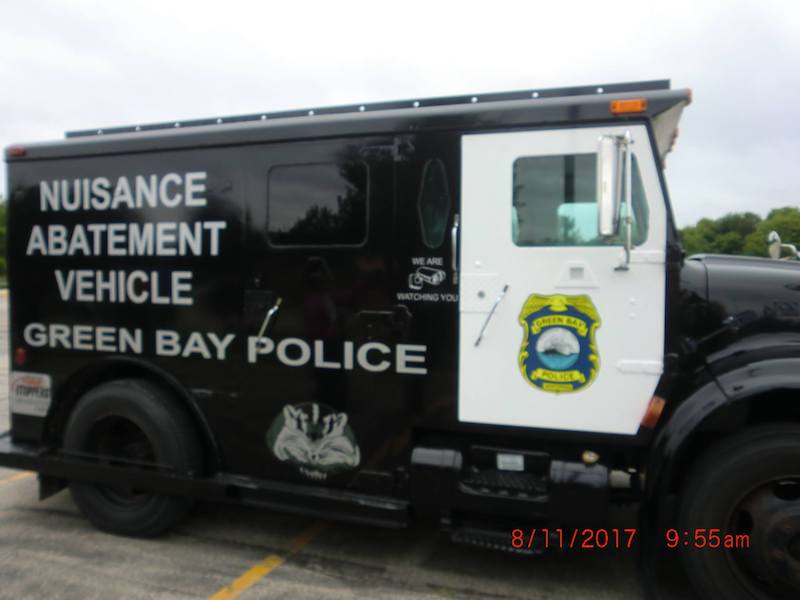
4. Practice, practice, practice.
I thought hitting a target on a shooting range meant I was a good shot. During Shoot/Don’t Shoot training I learned that hitting a moving target is NOTHING like hitting a stationary target at a range.
I also learned that If my life depended on drawing a Glock from the holster on a training duty belt, I’d probably die. Officers have to practice drawing their weapon tens of thousands of times so they can do it quickly and smoothly when their lives depend on it.
Shoot/Don’t Shoot training really gave me insight into what a shooting situation feels like. I knew it was just a training scenario and that I was completely safe but I felt my heart rate increase when the countdown started. (“Your scenario will begin in 5 seconds… 4…. 3…” Yikes!) In my second scenario I even experienced the stress-induced slow-motion effect. It was like the bad guy reaching for that revolver was moving underwater. (Too bad for him that all but one of my shots hit center mass.) I was so focused on being ready to shoot that I forgot all the other things I should have done like speak, move, and take cover. This give me a lot more to work with when I have to imagine what my protagonist is experiencing in a shooting situation.
5. So much to learn, so little time to learn it.
WPA is only four days. I’d love it if it were at least two day longer so I could take all the sessions. Here’s a smattering of what learned in the sessions I haven’t mentioned yet:
- Handcuffing another student is much easier than handcuffing a training dummy.
- Tasers don’t cause convulsions, drooling, or any of the other amusing affects seen on TV or in books. They do cause muscle stiffness and involuntary screaming but not permanent harm.
- TASER stands for Thomas A. Swift Electric Rifle. (How cool is that?!)
- You can leave behind touch DNA (from sweat and skin cells).
- You can leave fingerprints behind even when using latex gloves. (Who knew?!)
- Fingerprints can be recovered from the sticky side of duct tape, even if when two sticky sides stuck to each other.
- Bad guys are more likely to give up when they see police dogs, even when the human cops are visibly armed.
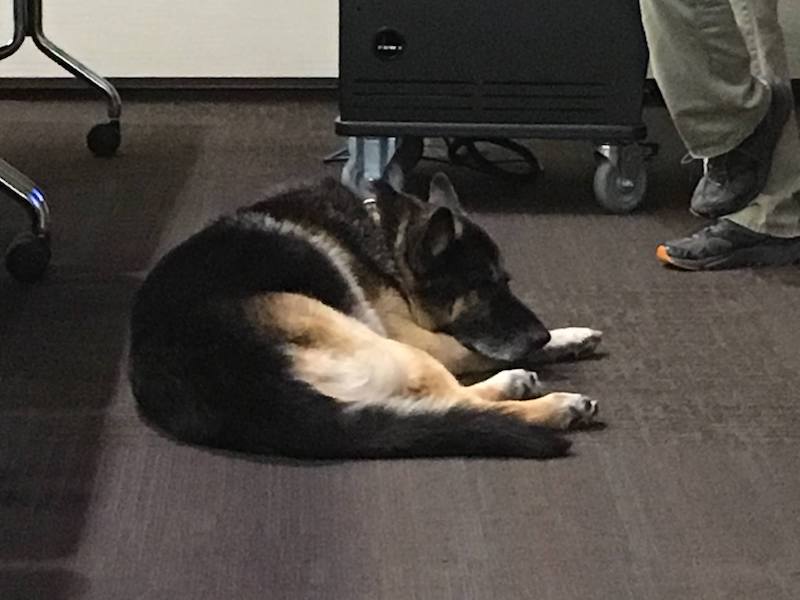
I learned so much more about procedure, mind set of cops, interview and interrogation, etc. than I could possible describe in one short blog post.
After thinking about all I learned at WPA and how little I have in common with my protagonist, I’m now working on making her a more realistic, well-developed character. It’s working, too. For the first time, I feel like my character is telling me things I need to know about her, like what her name really is (which is not the name I chose for her). Either I’m starting to get the hang of this writer thing or I’m becoming an EDP – and I have WPA to thank for it. I can hardly wait for next year!
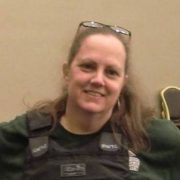
Cathy is a college writing instructor at the University of Michigan-Flint. In her copious spare time she’s working on her first mystery novel and enjoys attending mystery writing conferences and the WPA. She can be reached at cathyaj@icloud or cakers@umflint.edu.
